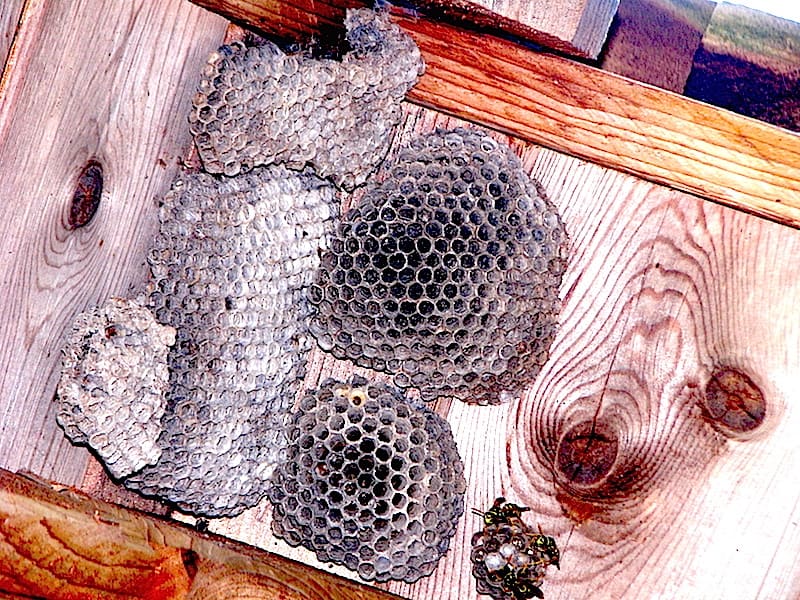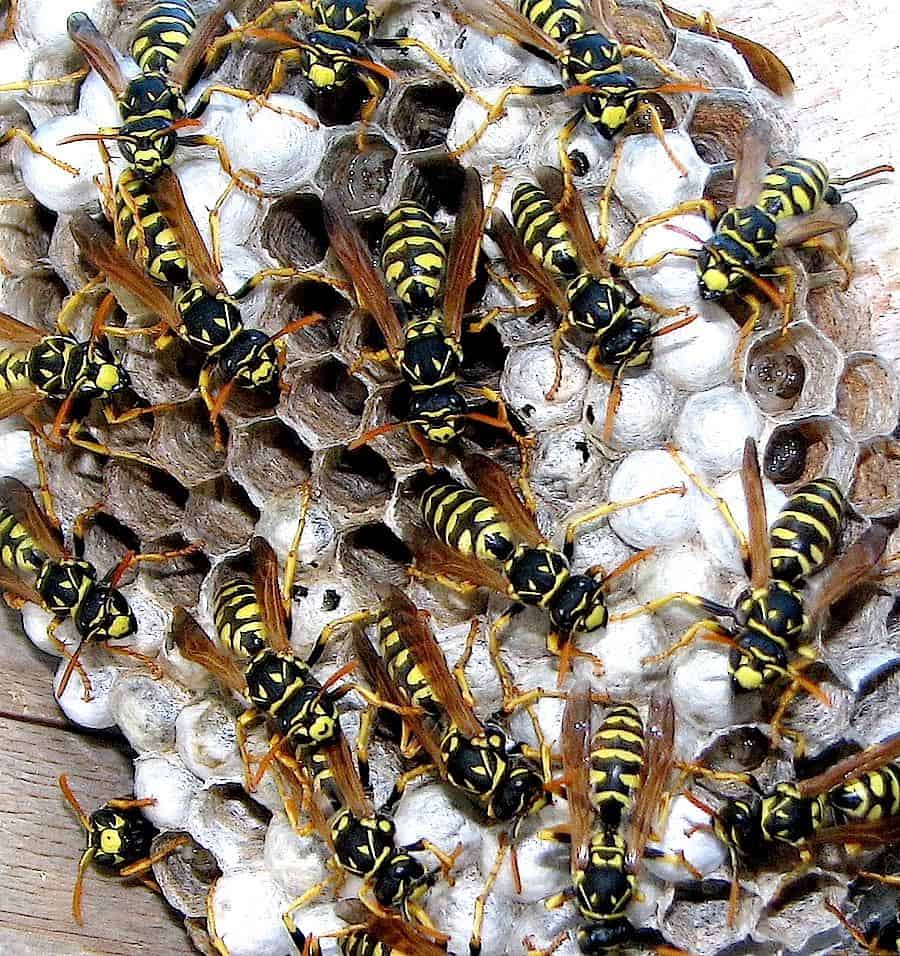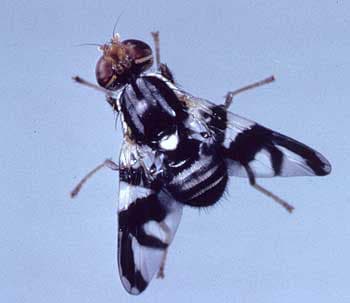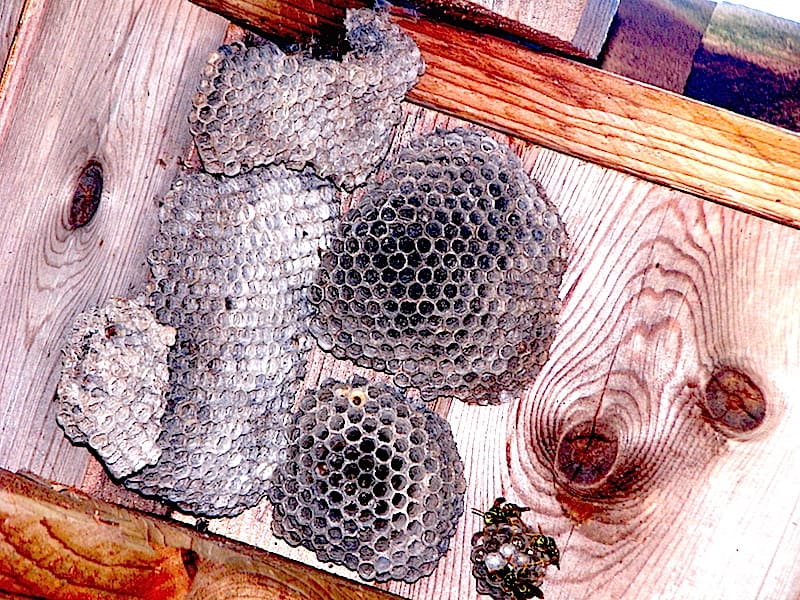It is a good year for wasps. Most people don’t see much of an upside to that statement.
Here is a premise : there are no wasps that are all bad, and there are some wasps that are (nearly) all good – and this within the narrow and self-interested parameters of Homo sapiens.
Many of us have noticed the arrival of a new species of wasp this summer of 2015 : fist-sized paper nests, their hexagonal combs open to the world, adorn eaves and gables of many of our houses.

The nests are attended to by what looks on first glance like the familiar yellow jackets that occasionally try to spoil a perfectly enjoyable picnic. But the new arrivals are a different breed : they are exotic invasives, they are the European Paper Wasp, Polistes dominula.

The species arrived in eastern North America in the late 70s and very successfully spread across the continent. The usual cry for eradication has been muted in this case – because the species in question seems to qualify for the label “nearly all good”. Several governmental agencies, concerned with agriculture, have acknowledged the European Paper Wasp as one of the most efficient biological control agents, when it comes to orchard and garden pests.
Because these wasps are hunters, not scavengers, they won’t bother you at the outdoor dinner table. They attack a wide variety of insects, from flies to caterpillars. They are not particularly aggressive, though they will defend their nests, and they can sting.
Some questions remain : are they displacing indigenous species of Paper Wasps ? Are they hunting beneficial insects as well as agricultural pests ? Will they, over time, upset the balance of local biodiversity ? Of course, these kinds of questions apply to all exotic species, most of which are not of such clear and demonstrable benefit as the European Paper Wasp.
The orchards of Reefpoint Farm, here on Cortes Island, were hard hit for a couple of years. The plum harvest was destroyed by an exotic (!), the Spotted Wing Fruit Fly, Drosophila suzukii. And the apple crop was severely damaged by the Apple Maggot Fly, Rhagoletis pomonella (Bruce Ellingsen, personal communication). This year, very few of the pests were observed, and the harvest was good. And there are many Paper Wasp nests to be found throughout the farm ! This observation qualifies as strictly anecdotal, and future years will have to confirm or contradict this simple correlation – but it is highly suggestive !
Of course, all insects, beyond the self-interested judgements of humans, have intrinsic values and astonishing complexity and beauty. The European Paper Wasp, aside from being put together with the same efficient perfection as all wasps, has surprises to offer. If you look carefully at the illustration above, you will discern a variety of small black patterns on the prominent frontal shield (the clypeus) of some of the wasps’ heads. The tiny aggregate of cephalic ganglia that passes for a brain in these insects runs “face recognition software”! The wasps recognize each other individually by these facial markings, which identify status and help stabilize the social structure of the colony.
Even the dreaded garden pests are full of surprises : the Apple Maggot Fly, for instance, offers a brilliant case-study of Batesian Mimicry : the black markings on its wings add to the body contour and mimic the silhouette of a jumping- or, perhaps, crab-spider, obviously aiming at deterring insect predators.

… but those are different stories …



